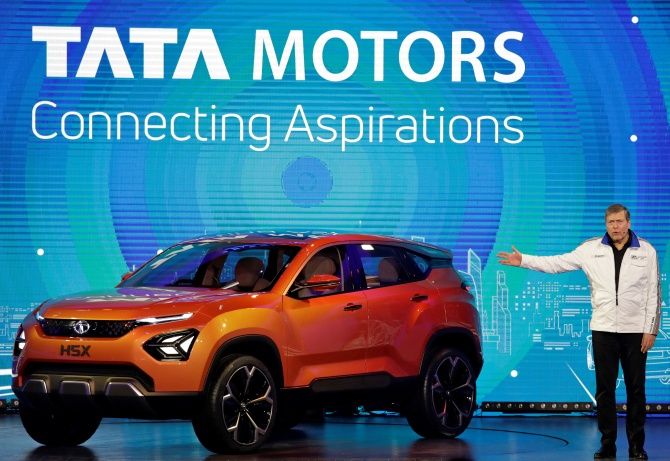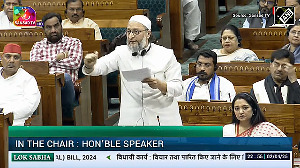Notwithstanding robust volume growth and a strong performance from Jaguar Land Rover (JLR), Tata Motors, the country’s second-largest automobile (auto) manufacturer by market capitalisation, disappointed the Street with its January-March quarter (Q4) results for 2023-24 (FY24).

While consolidated revenues saw a 13 per cent increase, lower-than-expected realisations in the Indian operations weighed down overall performance.
The commercial vehicle (CV) segment, representing 60 per cent of Indian auto business revenues, witnessed a mere 1.6 per cent growth, hampered by a 6 per cent decline in volumes.
This decline was attributed to the high base in the year-ago quarter, driven by pre-buying due to the Bharat Stage-VI Phase-II transition.
Despite higher prices and an improved product mix, revenues saw only a marginal increase.
Conversely, the passenger vehicle (PV) business saw a 15 per cent growth in volumes over the year-ago quarter, resulting in a revenue growth of 19 per cent.
The PV unit’s performance was bolstered by major facelifts for sport utility vehicles (SUVs) and multiple powertrain options, which boosted demand and volumes.
Operating profit margins for the internal combustion engine business stood at a healthy 10.3 per cent, while the electric vehicle (EV) business reached breakeven at the operating level (before research and development costs).
However, concerns loom over near-term demand weakness in both the domestic PV and CV segments.
The company expects flat to negative growth for the CV sector in 2024-25 (FY25) due to a higher base and increased competition from railways following the rollout of the dedicated freight corridor in the Northwest route.
According to research analyst Raghunandhan N L of Nuvama Research, these factors could escalate costs, particularly through increased marketing spending in global and domestic markets.
Additionally, the launch of EVs in the JLR/India CV business is expected to pressure margins in the initial years.
Despite these challenges, the company remains optimistic about the second half of FY25, counting on a better gross domestic product growth outlook, government incentives to enhance productivity in manufacturing and agriculture, and continued infrastructure focus.
In the PV segment, while the company has outpaced rivals and witnessed strong performance in its SUV portfolio, the outlook remains subdued.
The company foresees sub-5 per cent growth in the PV industry this year, attributed to large inventory levels and a high base, exacerbated by elections and a heatwave.
Brokerages foresee Tata Motors sustaining its outperformance, driven by the upcoming launches of the mid-sized SUV Curvv in the second half of calendar year 2024 (CY24) and the Sierra next year.
However, overall volume growth and the proportion of the EV portfolio will dictate future profitability trends for this business.
The outlook for its British subsidiary JLR mirrors similar challenges.
While the UK unit achieved its highest-ever revenues for Q4 and the full year, concerns arise regarding the order book’s decline, potentially leading to single-digit growth in FY25.
Rising customer acquisition costs further add to profitability concerns.
Despite these challenges, Tata Motors has made progress in debt reduction. While gross debt for JLR decreased from £5.8 billion to £4.8 billion sequentially, net debt reduced to £732 million from £1.57 billion in the October-December quarter.
The Indian auto operations are now net debt-free, with expectations for consolidated (auto) level net debt to achieve the same status in FY25.
While progress in deleveraging continues, analysts at Emkay Research, led by Chirag Jain, believe that the best may be behind for all businesses.
This sentiment is influenced by a declining order book, normalising product mix, and higher customer acquisition costs at JLR, coupled with a flat growth outlook for the domestic CV space and moderating India PV outlook.
Emkay Research maintains a ‘reduce’ rating with a target price of Rs 950.
Nuvama Research also holds a ‘reduce’ rating with a target price of Rs 940, projecting moderate revenue and operating profit growth over the next two years.
They cite one-year forward valuations (enterprise value-to-operating profit) at 6x, exceeding the five-year mean of 5x.
Disclaimer: This article is meant for information purposes only. This article and information do not constitute a distribution, an endorsement, an investment advice, an offer to buy or sell or the solicitation of an offer to buy or sell any securities/schemes or any other financial products/investment products mentioned in this article to influence the opinion or behaviour of the investors/recipients.
Any use of the information/any investment and investment related decisions of the investors/recipients are at their sole discretion and risk. Any advice herein is made on a general basis and does not take into account the specific investment objectives of the specific person or group of persons. Opinions expressed herein are subject to change without notice.












 © 2025
© 2025